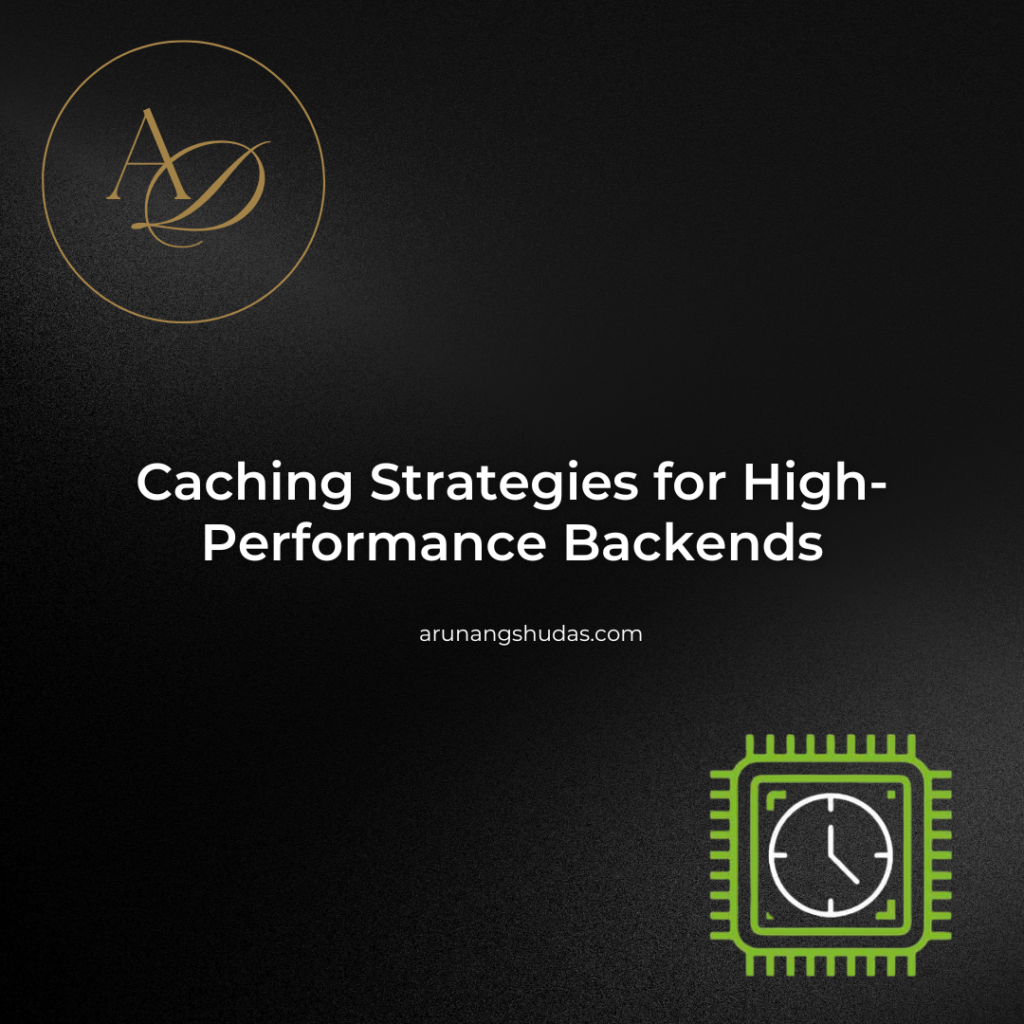In the quest for building high-performance backend systems, caching emerges as a powerful tool that can significantly enhance the speed and efficiency of applications.
What is Caching?
Caching is the process of storing copies of data in a temporary storage location, or cache, to reduce the time and resources required to fetch the data. By serving data from a cache, applications can reduce load on databases, improve response times, and enhance user experience.
Why Use Caching?
- Performance Improvement: Reduces latency by fetching data from a faster storage medium.
- Scalability: Helps manage high traffic loads by offloading frequent read requests from the database.
- Cost Efficiency: Decreases database usage, potentially reducing operational costs.
- Reliability: Provides a fallback mechanism during database outages.
Types of Caching
1. In-Memory Caching
Example Technologies: Redis, Memcached
Use Cases:
- Session storage
- Frequently accessed data
- Computation results
Advantages:
- Extremely fast data retrieval
- Low latency
Disadvantages:
- Limited by available memory
- Not persistent (data loss on restart)
2. Database Caching
Example Technologies: MySQL Query Cache, PostgreSQL Cache
Use Cases:
- Query results caching
- Index caching
Advantages:
- Built into the database
- Automatically managed
Disadvantages:
- Limited customization
- Can increase complexity in some scenarios
3. Application-Level Caching
Example Technologies: Caffeine (Java), Guava Cache (Java), .NET MemoryCache
Use Cases:
- Computed data caching
- Expensive operation results
Advantages:
- Fine-grained control over caching logic
- Can be tailored to application-specific needs
Disadvantages:
- Requires more development effort
- Increases application complexity
4. Content Delivery Network (CDN) Caching
Example Technologies: Cloudflare, Akamai, Amazon CloudFront
Use Cases:
- Static assets (images, CSS, JavaScript)
- API responses
Advantages:
- Global distribution of cached content
- Reduces load on the origin server
Disadvantages:
- Costs associated with CDN services
- Cache invalidation can be complex
Caching Strategies
1. Cache Aside (Lazy Loading)
Description: Data is loaded into the cache only when it is requested. If the data is not in the cache, it is fetched from the database and then stored in the cache.
Implementation:
const cache = new Map();
function getData(key) {
if (cache.has(key)) {
return cache.get(key);
} else {
const data = fetchDataFromDatabase(key); // hypothetical function
cache.set(key, data);
return data;
}
}Pros:
- Simple to implement
- Only caches needed data
Cons:
- Initial request can be slow
2. Write Through
Description: Data is simultaneously written to the cache and the database.
Implementation:
function saveData(key, value) {
database.save(key, value); // hypothetical function
cache.set(key, value);
}Pros:
- Consistent data between cache and database
- Simplifies read operations
Cons:
- Write operations can be slower
3. Write Back (Write Behind)
Description: Data is written to the cache initially and then asynchronously written to the database.
Implementation:
function saveData(key, value) {
cache.set(key, value);
setTimeout(() => database.save(key, value), 1000); // hypothetical function
}Pros:
- Fast write operations
- Reduces database load
Cons:
- Risk of data loss if cache fails
- Requires complex handling of write failures
4. Read Through
Description: The cache sits between the application and the database. The application interacts only with the cache, which fetches data from the database if needed.
Implementation:
function getData(key) {
if (cache.has(key)) {
return cache.get(key);
} else {
const data = fetchDataFromDatabase(key); // hypothetical function
cache.set(key, data);
return data;
}
}Pros:
- Simplifies application logic
- Ensures data is always available
Cons:
- Can be complex to implement
- Cache misses can be costly
Best Practices for Caching
- Identify Cacheable Data: Not all data should be cached. Identify data that is frequently accessed or expensive to retrieve.
- Set Appropriate TTL (Time to Live): Define expiration times for cached data to ensure stale data is not served.
- Cache Invalidation: Implement strategies to invalidate or update cached data when the underlying data changes.
- Monitor Cache Performance: Regularly monitor cache hit rates, latency, and resource usage to optimize performance.
- Choose the Right Caching Layer: Select the appropriate caching layer (application, database, CDN) based on your specific use case and requirements.
Conclusion
Caching is a vital technique for enhancing the performance and scalability of backend systems. Remember to continuously evaluate and adjust your caching strategies to align with your application’s evolving needs.




